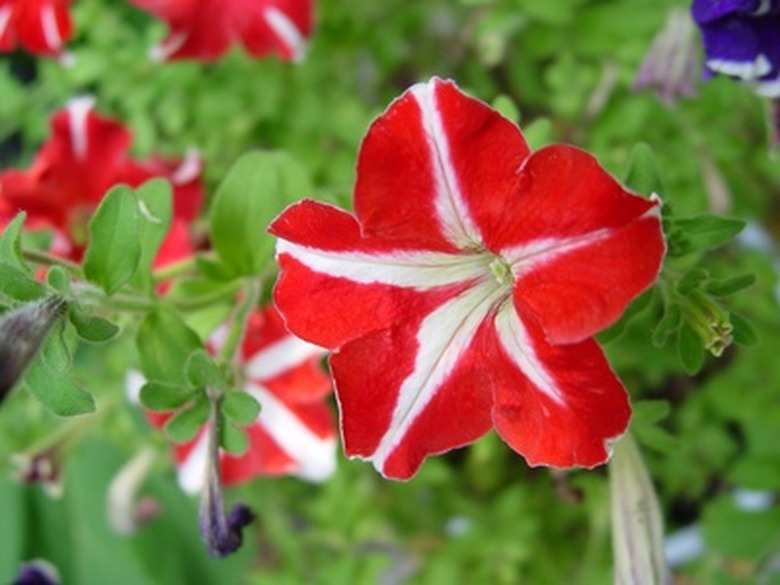How To Cut Back Petunias
Petunias are a favorite among many gardeners for their ease to grow and abundant blooms throughout the season. Available in various shades of red, pink, white and purple, as well as variegated, petunias bloom in both trumpet-like shapes and the more carnation-like double variety on the ends of their stems. By mid-July, petunias tend to start getting "leggy"–that is, have long, scraggly stems that are unsightly. With a little pruning, petunias perk back up for a late-season show of brilliance.
Step 1
Choose no more than five stems near the middle of your container to begin pruning. Cutting back an annual such as the petunia can take up to a couple of weeks because the shock of being pruned too much will kill the plant. Do so in small increments, allowing a few days of healing between cutting.
- Petunias are a favorite among many gardeners for their ease to grow and abundant blooms throughout the season.
- Cutting back an annual such as the petunia can take up to a couple of weeks because the shock of being pruned too much will kill the plant.
Step 2
Snip stems one at a time back 4 or 5 inches, making sure that you leave at least one set of leaves on the stem. Be sure that your shears or scissors are sharp; tearing the plant can cause too big of an injury space and invite disease. Be sure that your shears or scissors are clean to avoid spreading disease from one plant to another. Prune only a few stems–no more than five in a large plant.
Step 3
Allow the plant a few days to rest and heal between each pruning, watering as normal, but wait until the whole pruning job is complete to fertilize.
Step 4
Continue pruning a few stems as described until your plant has been cut back to your satisfaction.
Step 5
Fertilize with a water-soluble all-purpose fertilizer or compost tea when finished pruning. New growth will begin to show quickly.
- Snip stems one at a time back 4 or 5 inches, making sure that you leave at least one set of leaves on the stem.
- Be sure that your shears or scissors are sharp; tearing the plant can cause too big of an injury space and invite disease.
Tip
Fertilize and water petunias–especially those grown in containers–on a regular basis. Deadhead petunias by pinching away spent blooms just below the bloom–including the head of the stem–for a longer show of blooms. Annuals have a short life cycle and once they begin to seed, they will bloom less and focus their energy on seed production. By not allowing the plant to go to seed, you force more blooms.
